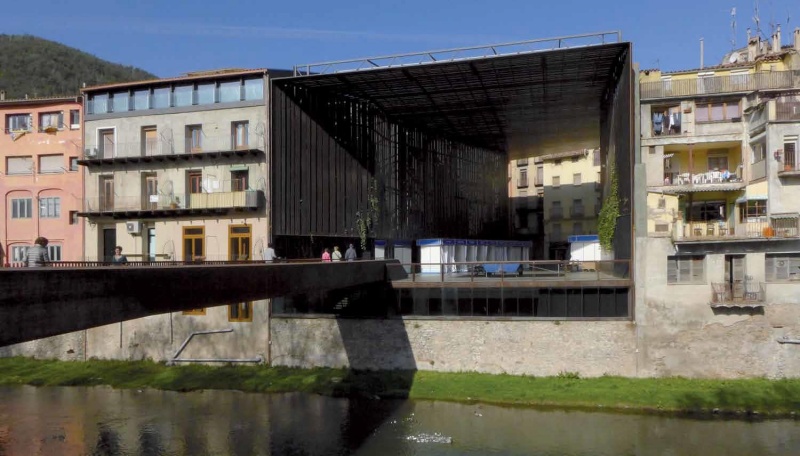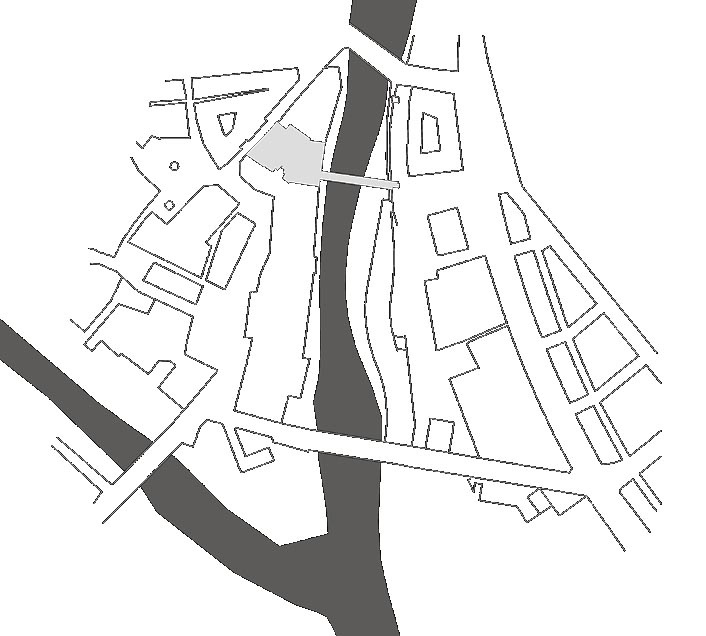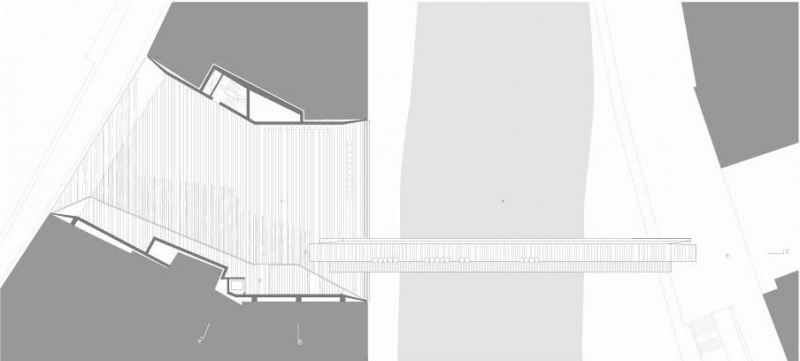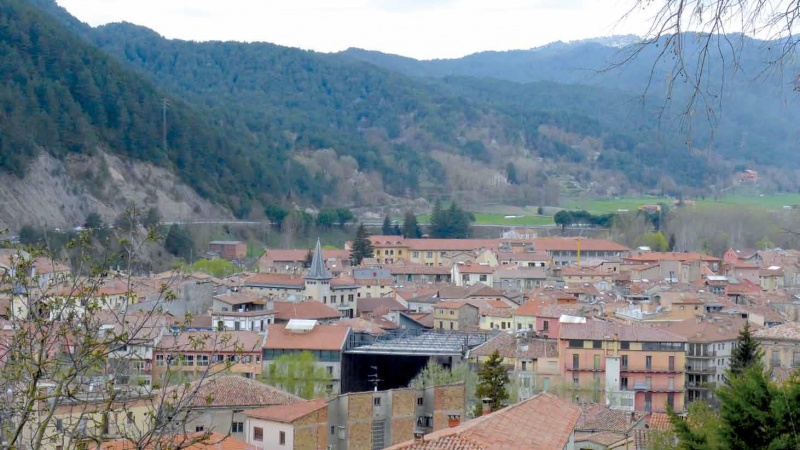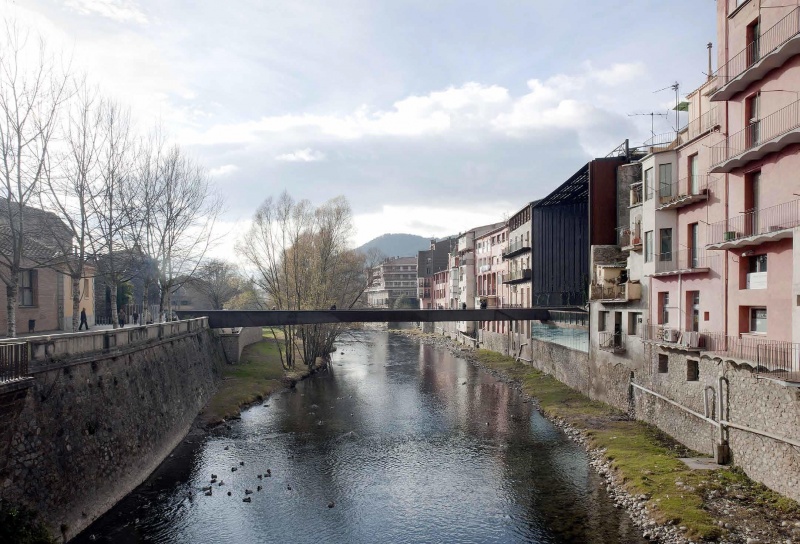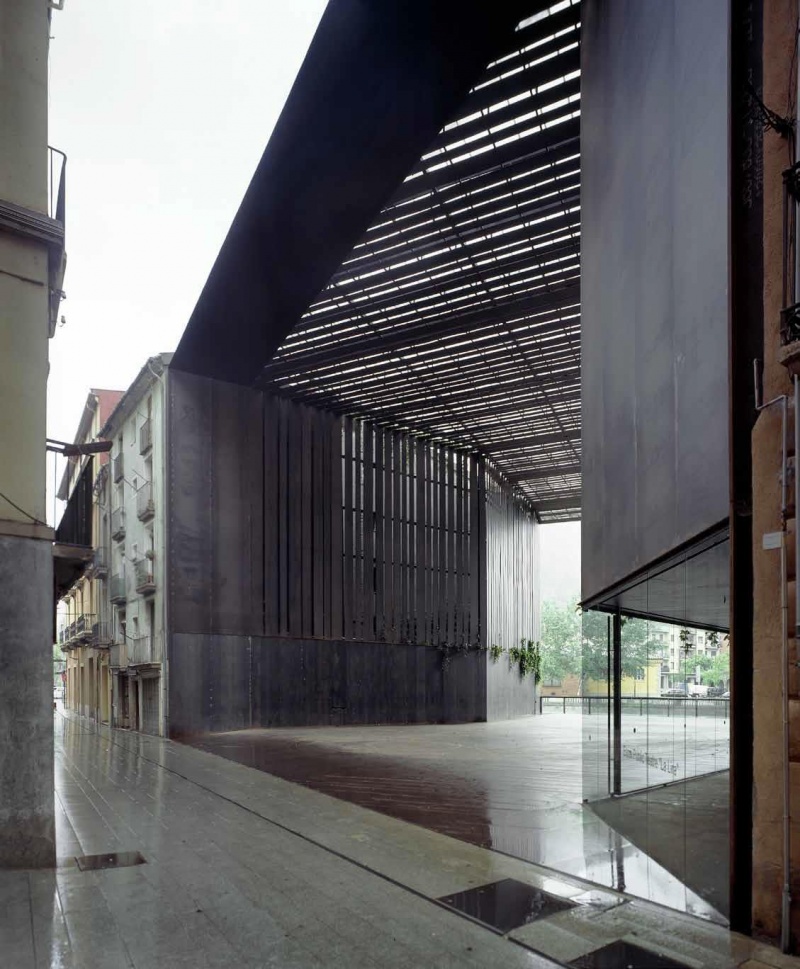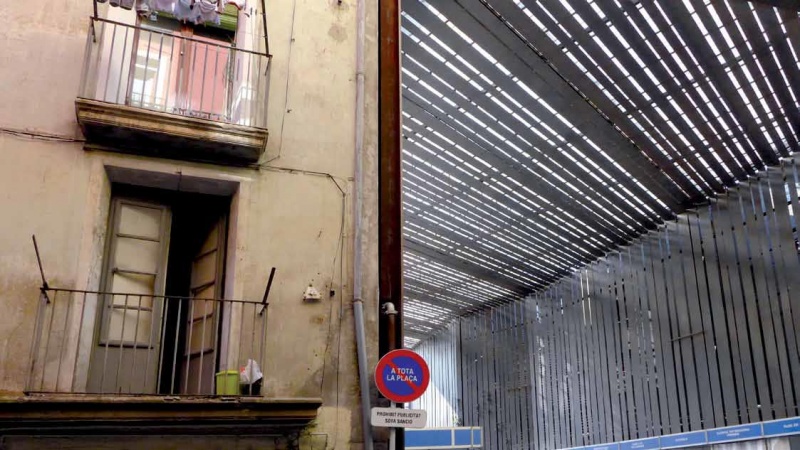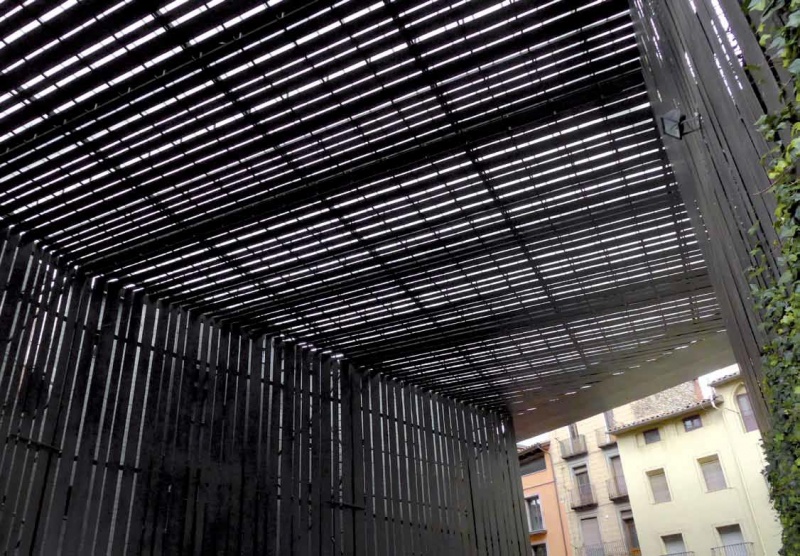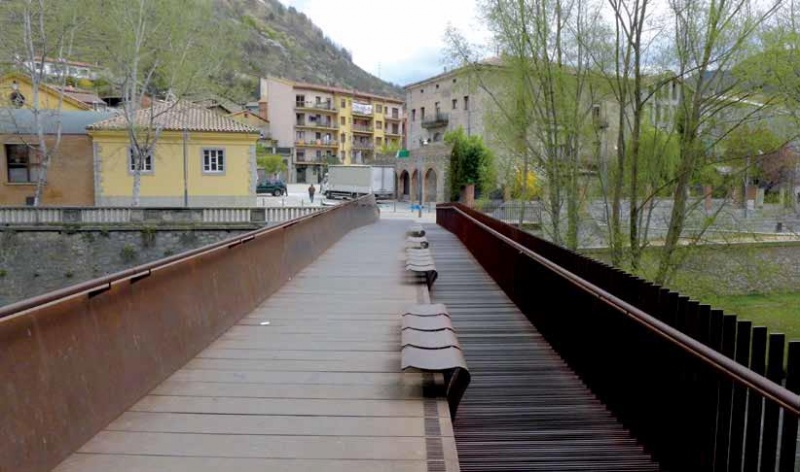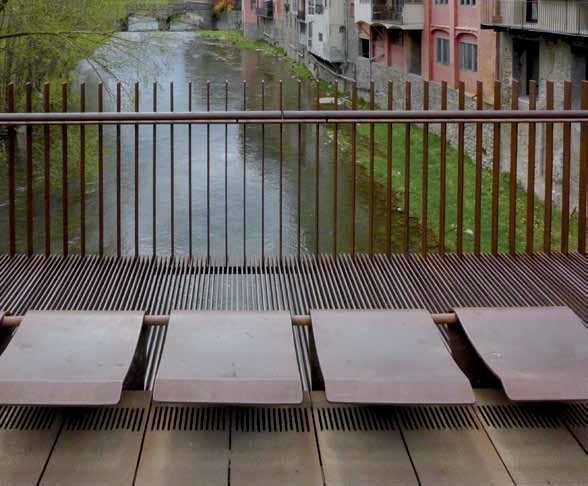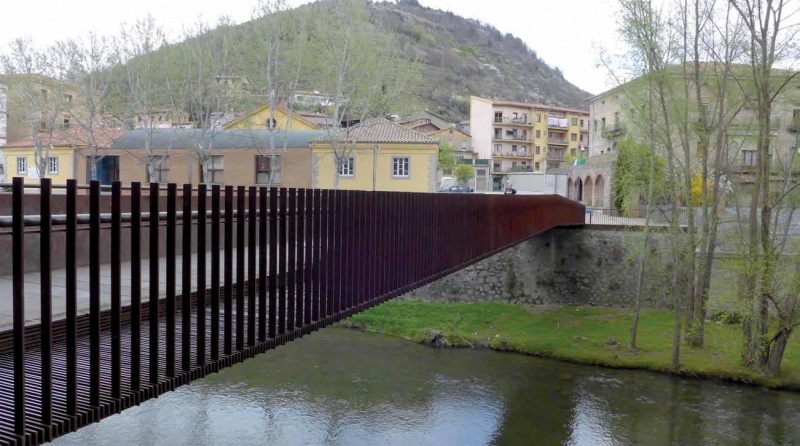A porch and a footbridge fill an empty space left when an old theatre was demolished, thus becoming a frame for the view of the mountains and a gateway giving access to the old town centre.
[Francis Rambert, Director of IFA/Cité de l’Architecture et du Patrimoine (la Cité) | Duration: 01:32]
TECHNICAL SHEET
Authors: RCR Aranda Pigem Vilalta Arquitectes SLP | Joan Puigcorbé
Country: Spain
Surface: 599 m2
Cost: 761.219 €
Project: 2004
Work: 2005
End of work: 2012
DESCRIPTION
For many years after the demolition of the “La Lira” theatre, a vacant lot remained in the centre of Ripoll, a town of high annual rainfall in the Pyrenees foothills. With blind flank walls on either side, the empty block afforded some breathing space in the narrow Verdaguer street but it also broke the continuity of the urban façade overlooking the River Ter. This gash was highly visible to many outside visitors who entered the town from the railway station or by road to visit its Romanesque Monastery. It was also an unsightly interruption in the town’s connection with the river which, from the Middle Ages until well into the twentieth century, supplied water for Ripoll’s metallurgical industry, which was renowned throughout Europe because of its use of the “Catalan forge”.
In 2003, the local council called for entries in a competition with a view to converting the vacant lot into a public space. The land is now occupied by a new theatre which, benefitting from the demolition of the original one, has kept the same name. Today’s “La Lira” theatre takes the form of a high porch sheltering a versatile open space, beneath which there is an underground multi-use room. Although the ceiling is impermeable, it lets light through by means of parallel slats which fold down on either side to cover the flank walls. The intervention as a whole has thus become a window that reconstitutes the riverfront facade and frames the view of the mountains from Verdaguer street. It is also a gateway giving access to the old town centre by way of a footbridge crossing the River Ter.
Both porch and bridge are made of weathering steel. The rough surface of the metal fits well with the aged facades of the adjacent buildings, while the diversity of its treatments evokes the metallurgical tradition of the town. However, the most pertinent tradition recovered by the new “La Lira” is that of nineteenth-century markets and railway stations which have managed to remain somewhere between the closed building and the open space. Like those public porches, the new theatre in Ripoll avoids wasteful use of glass and air-conditioning, while gaining in versatility in the ways in which the space can be used, as well as showing solidarity with its urban setting.
David Bravo, architect



